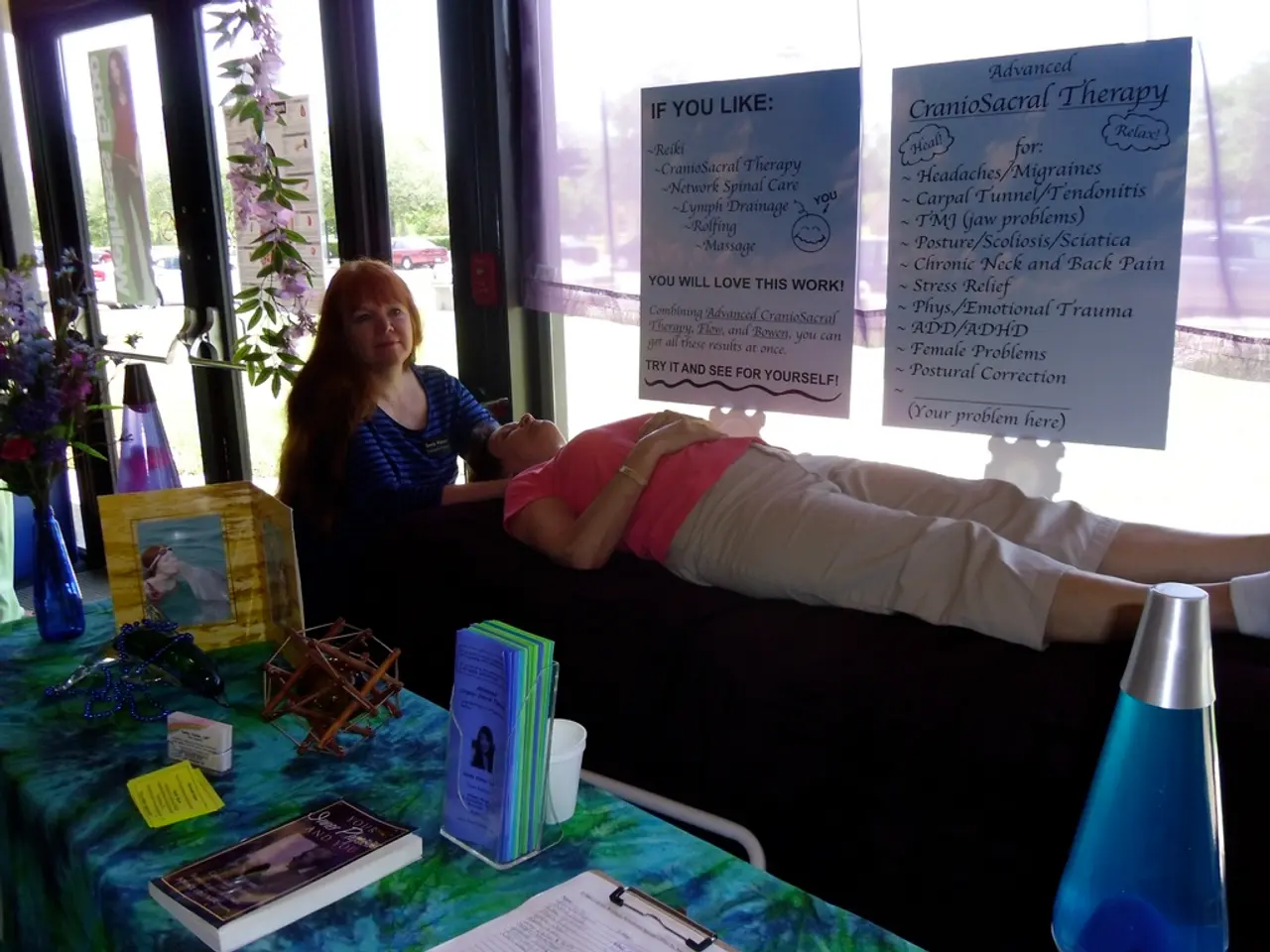Managing Emotional Exhaustion: Strategies for Recovery
Burnout, a state of physical, emotional, and mental exhaustion caused by long-term exposure to stressors, can be a challenging hurdle for many individuals, particularly those who are neurodivergent. This condition can make it difficult to enjoy personal life and perform effectively in professional roles. However, a key strategy to combat burnout is emotional regulation, a skill that can help manage and control emotions in a healthy way.
Emotional regulation techniques have been shown to lower stress hormones like cortisol, create psychological distance from negative thoughts, and restore balance in the nervous system. For neurodivergent individuals, who may face heightened emotional dysregulation and sensory overload, tailored emotional regulation can be a critical tool for managing overwhelm and preventing burnout exacerbation.
Mindfulness practices, such as breathwork, body scans, and noting, interrupt "autopilot" stress reactions, allowing intentional responses instead of reactive patterns. This reduction in physiological stress and improvement in emotional control is essential for neurodiverse individuals who often face challenges in managing their emotions.
Cognitive reappraisal, the process of reframing negative or stressful interpretations, lessens the burnout risk by minimising the harmful impact of surface emotional acting (masking) and emotional exhaustion. This is particularly relevant for neurodivergent individuals who often engage in masking behaviours to fit social or professional norms.
Structured energy management and restorative breaks, like the Pomodoro Technique and incorporating movement or nature exposure, help redistribute mental energy and support emotional recovery cycles, crucial for sustained functioning in ADHD burnout.
Therapeutic support that affirms neurodivergent identities allows individuals to unmask authentic emotional expression rather than suppress or inhibit emotions, improving self-acceptance and emotional resilience.
In addition to these strategies, engaging in calming and soothing activities can help reduce stress and regulate emotions. These activities can include deep breathing, journaling, exercise, and creating a calm and quiet environment. By incorporating emotional regulation into daily routines, individuals can effectively manage thoughts and feelings, leading to improved mental and physical well-being.
It's important to note that burnout can affect anyone, regardless of age, gender, or occupation. Unregulated emotions can lead to chronic stress, a leading cause of burnout, and can impact mental and physical health, increasing the risk of developing health problems like heart disease, diabetes, and depression.
In conclusion, emotional regulation techniques reduce emotional and physiological stress, support adaptive coping strategies, and foster resilience in high-demand or neurodiverse contexts, making them essential in burnout recovery and prevention. Seeking professional help, joining support groups like the "Executive Function Support for Women" on Facebook, and incorporating self-care activities into daily routines can contribute significantly to overcoming burnout and managing stress in personal and professional life.
- Burnout, a state of exhaustion caused by prolonged stressors, can be particularly challenging for neurodivergent individuals, who may struggle with emotional regulation and focus in their personal and professional lives.
- Emotional regulation techniques have been scientifically proven to lower stress hormones and improve emotional control, making them essential for individuals dealing with burnout.
- Mindfulness practices, such as breathwork, body scans, and noting, can interrupt "autopilot" stress reactions, allowing for intentional responses instead of reactive patterns, which is vital for neurodiverse individuals.
- Cognitive reappraisal, the process of reframing negative or stressful interpretations, can lessen the risk of burnout for neurodivergent individuals, particularly those who often engage in masking behaviors.
- Structured energy management and restorative breaks, like the Pomodoro Technique and incorporating movement or nature exposure, can help redistribute mental energy and support emotional recovery cycles, crucial for sustained functioning in ADHD burnout.
- Therapeutic support that affirms neurodivergent identities is key, as it allows individuals to express authentic emotions, improving self-acceptance and emotional resilience.
- Engaging in calming activities such as deep breathing, journaling, exercise, and creating a peaceful environment can help reduce stress and regulate emotions, leading to improved mental and physical well-being.
- It's important to remember that burnout can affect anyone, regardless of age, gender, or occupation, and unregulated emotions can lead to chronic stress, impacting mental and physical health.
- To combat burnout, individuals can seek professional help, join support groups like "Executive Function Support for Women" on Facebook, and incorporate self-care activities like emotional regulation, mental-health awareness, fitness-and-exercise, and career-development into their daily routines, promoting personal-growth and health-and-wellness.




